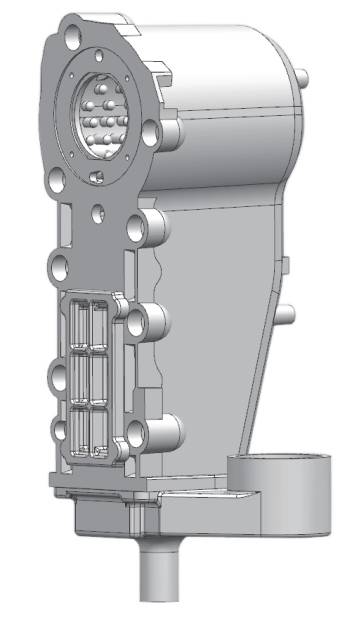- Afrikaans
- Albanian
- Amharic
- Arabic
- Armenian
- Azerbaijani
- Basque
- Belarusian
- Bengali
- Bosnian
- Bulgarian
- Catalan
- Cebuano
- China
- China (Taiwan)
- Corsican
- Croatian
- Czech
- Danish
- Dutch
- English
- Esperanto
- Estonian
- Finnish
- French
- Frisian
- Galician
- Georgian
- German
- Greek
- Gujarati
- Haitian Creole
- hausa
- hawaiian
- Hebrew
- Hindi
- Miao
- Hungarian
- Icelandic
- igbo
- Indonesian
- irish
- Italian
- Japanese
- Javanese
- Kannada
- kazakh
- Khmer
- Rwandese
- Korean
- Kurdish
- Kyrgyz
- Lao
- Latin
- Latvian
- Lithuanian
- Luxembourgish
- Macedonian
- Malgashi
- Malay
- Malayalam
- Maltese
- Maori
- Marathi
- Mongolian
- Myanmar
- Nepali
- Norwegian
- Norwegian
- Occitan
- Pashto
- Persian
- Polish
- Portuguese
- Punjabi
- Romanian
- Russian
- Samoan
- Scottish Gaelic
- Serbian
- Sesotho
- Shona
- Sindhi
- Sinhala
- Slovak
- Slovenian
- Somali
- Spanish
- Sundanese
- Swahili
- Swedish
- Tagalog
- Tajik
- Tamil
- Tatar
- Telugu
- Thai
- Turkish
- Turkmen
- Ukrainian
- Urdu
- Uighur
- Uzbek
- Vietnamese
- Welsh
- Bantu
- Yiddish
- Yoruba
- Zulu
Oct . 19, 2024 09:37 Back to list
Properties and Applications of Aluminum Silicon Alloys in Modern Engineering Solutions
The Versatile World of Aluminum Silicon Alloys
Aluminum silicon alloys are a significant class of materials that have gained widespread use in various industries due to their unique properties and versatility. These alloys combine aluminum with silicon, enhancing their mechanical and physical properties while maintaining lightweight characteristics. This article delves into the composition, properties, manufacturing processes, and applications of aluminum silicon alloys.
Composition and Types
Aluminum silicon alloys are primarily composed of aluminum (Al) and silicon (Si), with the silicon content typically ranging from 5% to 50%. The addition of silicon allows for improved fluidity and castability, essential factors in the manufacturing process. The two main types of aluminum silicon alloys are the 4xx.x series (mainly for casting) and the 3xx.x series (engineered for a balance of stiffness and ductility).
In these alloys, silicon plays a crucial role in lowering the melting point and reducing shrinkage rates during solidification, making them ideal for casting. The most common aluminum silicon alloy is the A356 alloy, which contains about 6.5% silicon and 0.4% magnesium. This alloy is known for its excellent corrosion resistance, high strength-to-weight ratio, and good weldability.
Properties
One of the defining characteristics of aluminum silicon alloys is their excellent corrosion resistance. The silicon content enhances the alloy's ability to withstand various environmental conditions, making it suitable for outdoor applications. Additionally, these alloys possess high thermal and electrical conductivity, which is advantageous in applications ranging from automotive components to electrical housings.
The mechanical properties of aluminum silicon alloys are also noteworthy. They exhibit good tensile strength and hardness, particularly when heat-treated. The formation of a silicon-rich microstructure contributes to improved wear resistance, making these alloys suitable for high-performance applications.
Manufacturing Processes
Aluminum silicon alloys are primarily manufactured through casting processes, which can include die casting, sand casting, and permanent mold casting. The choice of casting method depends on the intended application and the desired properties of the final product.
aluminum silicon alloy

1. Die Casting This method involves injecting molten metal into a mold under high pressure. It is ideal for producing complex shapes with excellent dimensional accuracy. Die casting is widely used in the automotive industry for manufacturing engine components and housings.
2. Sand Casting A traditional method that uses sand molds to form the desired shape. While it may not provide the same level of accuracy as die casting, it is cost-effective for producing large components and is commonly used in the aerospace sector.
3. Permanent Mold Casting This process utilizes reusable metal molds to produce components. It offers a balance between the accuracy of die casting and the flexibility of sand casting, making it suitable for medium to high volume production.
Applications
Aluminum silicon alloys find use in a multitude of applications across various industries. In the automotive sector, components such as engine blocks, cylinder heads, and transmission cases are frequently made from these alloys. Their lightweight nature contributes to fuel efficiency, while their strength ensures durability and performance.
In aerospace, aluminum silicon alloys are utilized in structural components and fittings, where weight reduction is crucial. The electronics industry also benefits from these alloys, which are used in housings and heat sinks due to their excellent thermal conductivity.
Furthermore, aluminum silicon alloys are employed in everyday products like cookware, sporting goods, and machinery components, showcasing their versatility and adaptability.
Conclusion
In summary, aluminum silicon alloys represent a remarkable achievement in materials engineering. Their unique properties, including lightweight, high strength, corrosion resistance, and excellent castability, make them suitable for various applications. As industries continue to seek materials that enhance performance without compromising weight, aluminum silicon alloys will undoubtedly play a pivotal role in advancing technology and design. The future holds promise for further innovations in alloy compositions and processing techniques, expanding their potential even further.
-
8mm Thin-Walled Cast Steel Manhole Cover Pallet Bottom Ring | Durable
NewsAug.04,2025
-
Premium Cast Iron Water Main Pipe: Durable, Corrosion-Resistant
NewsAug.03,2025
-
Durable Cast Iron Water Mains | AI-Optimized Systems
NewsAug.02,2025
-
High-Efficiency Propane Boiler for Baseboard Heat | Save Energy
NewsAug.01,2025
-
Premium Source Suppliers for Various Gray Iron Castings
NewsJul.31,2025
-
Durable Cast Iron Water Main Pipes | Long-Lasting
NewsJul.31,2025


